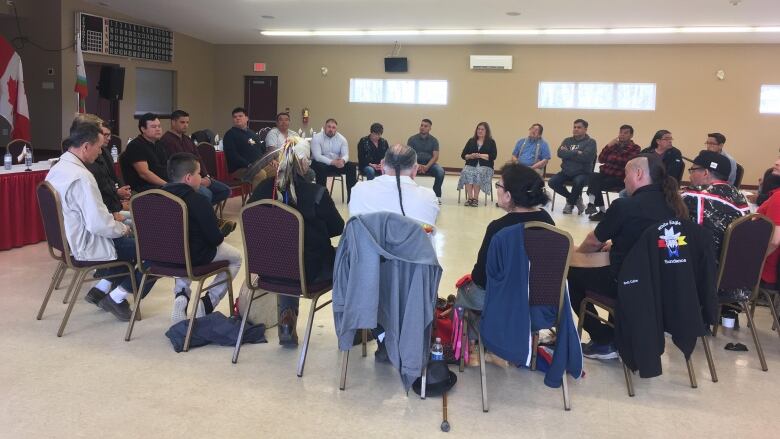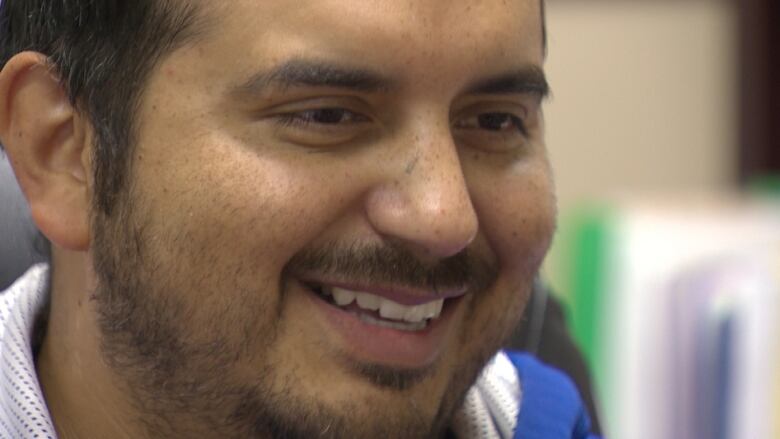Overcrowding, vulnerable population make COVID-19 big worry for First Nations
'We have two or three families living in a house, so it's hard to isolate people'

As the number of cases of COVID-19 increases in New Brunswick, concern within the Indigenous communities across the province grows too.
With overcrowding caused by housing shortages, and a population with more medical vulnerabilities, the prospect of a coronavirus outbreak in First Nations communities worries leaders.
"It can take a great strain on us here in our communities because we have two or three families living in a house, so it's hard to isolate people," said Elsipogtog council member Ruth Levi. "We're close-knit families."
Those concerns have led First Nations communities to take steps to keep the virus out.
"I think the whole world is restless right about this time," Levi said. "We're making the best of it."
"We're as good and ready as any community can be, I guess, at this point," said Levi.
Every First Nation has closed its local schools, aligning with the provincial school closures.

Many communities have also closed non-essential band businesses such as gaming centres, leaving only gas stations, grocery stores and health centres to remain open.
Elsipogtog's River of Fire Market and the St. Mary's Supermarket have decreased their operating hours and put in seniors-only shopping times.
Chief Ross Perley of Neqotkuk, also known as Tobique First Nation, said he has been working with the community's health centre to ensure that vulnerable people within the community have the supplies they need to combat the spread of the virus should it reach there.
Those supplies include hand sanitizer, gloves, masks and disinfectants.

"In terms of preparation, obviously the elderly are the most vulnerable or anyone with a weakened immune system," Perley said. "The health centre has provided them with some materials in terms of taking precautions and instructions on how to properly disinfect."
After speaking with Dr. Michael Perley, a physician who works within Tobique and Woodstock First Nations, Perley said his community would be taking more extreme measures to control the transmission of the COVID-19 virus.
"After speaking with Dr. Mike, it's clear to us that it's inevitable the coronavirus will infect our community if we don't take extreme measures," Perley said in a Facebook live video.
Perley placed emphasis on protecting the 135 elders within the community, many of whom have existing health conditions.
The community developed a "check-in procedure" program, which was to start this week.

Following the Assembly of First Nations' declaration of a national state of emergency, Perley said his council voted in favour of declaring a local state of emergency as well.
That includes putting into effect a curfew from 8 p.m. to 8 a.m. for the entire community. There is also a checkpoint located near the entrance of the community to screen people coming in and out of the reserve.
Extra tribal security will also be deployed along with assistance from the local RCMP.
Perley said the only non-community members who are permitted to enter are those who are scheduled to be there to service the community, such as mail delivery.
Elsipogtog First Nation has also employed a similar checkpoint and curfew.
"We have started monitoring who comes in and out of the community," said Levi.

As of today, Elsipogtog security personnel are now mandated to turn away any and all non-essential traffic into the community between 8 p.m. and 6 a.m.
Chief Alan Polchies of Sitansisk, also known as St. Mary's First Nation, said his community's health centre is now able to make referrals directly to the hospital in Fredericton for testing of the COVID-19 virus.
Polchies added that his community is doing grocery delivery to community members from the St. Mary's Supermarket to encourage physical distancing.
He said his community is also looking to help with the mental stress involved in this outbreak by working on a program to bring the community back to the land to learn about sacred medicines and practices in small groups.
"We're going to encourage the families to work on their mental health and do on-the-land based activities," Polchies said.

"We are stewards of the land and this is how we're going to connect to our mental health by our teachings, our songs, our stories, our medicines. " Chief Polchies added.
Kyana Kingbird of Esgenopetitj said communication is important for her role as a community safety planner..
"One thing to take into account is the fact that this is new for everybody," Kingbird said about dealing with the COVID-19 pandemic.
"We've been working closely with EMO. We've also been gathering potential mitigation activities that we could do according to the level of transmission, and right now it's none to minimal."
Kingbird said it's important to educate people on what the symptoms are and, if they are showing any signs, to self isolate if possible.
Kingbird said overcrowding is an issue, as it is with many First Nations communities across the country.
When we gather, we gather in multiple numbers. So to say you can't gather for more than five people per household, that creates a big issue.Chief Alan Polchies
"That's something that we've also been concerned about and we don't have any clear solutions for that."
Levi said that in addition to overcrowding because of housing shortages in Elsipogtog, the largest First Nation community in New Brunswick, homelessness is also an issue. Trying to accommodate for those band members may be increasingly difficult.
"So really, it's a lack of resources," Levi said. "The idea is to isolate them. Sometimes we use the local motel here but they've shut down too."
Polchies and Perley also pointed to the housing need and overcrowding as a major issue.
"We are a close-knit community, some of our housing is over crowded, but our custom is to gather," Polchies said. "When we gather, we gather in multiple numbers. So to say you can't gather for more than five people per household, that creates a big issue."
"I applaud the folks in the Parliament that are putting their ministers and their prime minister to task to constantly remind them we're in a new decade, it's 2020, This should not be happening in First Nations communities."
The federal government will provide $305 million for a new Indigenous community support fund to address immediate needs in First Nations, Inuit and Mtis Nation communities.
Federal response
"We recognize that Indigenous Canadians are faced with greater health vulnerabilities and greater economic challenges than most Canadians at the best of times," Prime Minister Justice Trudeau said
Last week, Indigenous Services Minister Marc Miller said the formula to access the community support fund would be based on need and population and designed to give First Nations access to funding quickly.
"We're here to mobilize supplies," Miller said. "We are here to address the vulnerabilities of Indigenous communities, and recognize that we can only do this in close collaboration with Indigenous leadership across this country."












_(720p).jpg)


 OFFICIAL HD MUSIC VIDEO.jpg)
.jpg)



























































































